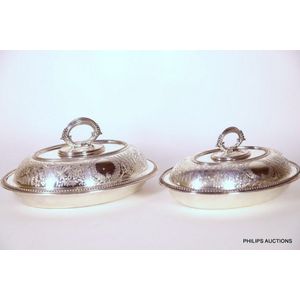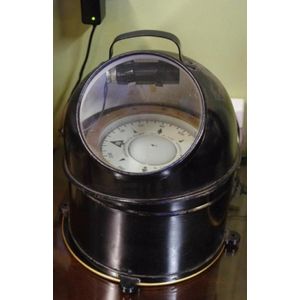Len Castle Salt Glazed Stoneware Beer Flagon
You must be a subscriber, and be logged in to view price and dealer details.
Subscribe Now to view actual auction price for this item
When you subscribe, you have the option of setting the currency in which to display prices to $Au, $US, $NZ or Stg.
- Manganese Glaze - A manganese glaze contains manganese dioxide as a colorant. When fired at high temperatures, the manganese dioxide in the glaze reacts with the clay body to create a range of colors, including brown, black, purple, and deep red.
Manganese glazes have been used to decorate ceramics for thousands of years, and they have been particularly popular in Chinese and Korean pottery. In China, manganese glazes were first used during the Song dynasty (960-1279 AD), and they were later used in the production of Jun ware during the Ming dynasty (1368-1644 AD). In Korea, manganese glazes were used to decorate celadon pottery during the Goryeo dynasty (918-1392 AD).
The glaze can be applied to pottery using a variety of techniques, including brushing, pouring, and spraying. The glaze can be applied alone or in combination with other glazes to create a range of effects, including speckled or mottled surfaces. However these glazes can be difficult to control, as they tend to be very fluid and can easily run or drip during firing. However, this fluidity can also be used to create interesting effects, such as the "hare's fur" pattern that is often seen in Chinese tea bowls.
Manganese glazes are still in use by potters and ceramic artists to create unique and beautiful surfaces on their work. - Salt Glazed - Salt glazing involves throwing salt into the kiln when it is at its highest temperature, usually around 2,300 to 2,400 degrees Fahrenheit (1,260 to 1,320 degrees Celsius). The salt vaporizes and forms a glaze on the surface of the pottery, creating a range of effects depending on how the salt is applied and the firing conditions. This glazing method was first developed in Germany in the 15th century and quickly became popular throughout Europe and North America. It was particularly popular for making stoneware pottery, such as jugs, crocks, and other utilitarian objects.
Salt glazes can produce a range of colors, including gray, brown, blue, and even pink or purple in some cases. The texture of the glaze is typically rough and pebbled, with a matte or satin finish. The process of salt glazing can be unpredictable, with variations in temperature and salt application leading to subtle variations in the finished product.
Salt glazing is still used by potters and ceramic artists although it is less common than it was in the past. - Flagon - A flagon is a tall narrow cylindrical vessel, often with a handle, in metal, glass or ceramics for storage and carriage of liquids. It is also used to describe an elongated metal tankard with either a flat or domed lid and a thumbpiece for raising it, used for drinking beer.
This item has been included into following indexes:
Visually similar items

18ct tri-colour gold 'Trinity' bangle, Cartier, designed as three 3.20 mm entwined tri-colour gold half round bands, gross weight approximately 25.97 grams, inner diameter approximately 70 mm, signed Cartier, maker's mark, numbered 31508. Accompanied by fa

Two matching late Victorian silver plated vegetable tureens, later 19th century, with maker's mark for James Dixon & Sons, oval bead edged tureens in two sizes with covers and removable thread and cornucopia handles, finely engraved to the covers with a de

Maritime binnacle with compass, by Wagner Auto Pilot, Canada, 24 cm high approx

A Chinese figure of Guanyin seated on a rock. Carved from horn. Seal marks on. The back. Height 23 cm
